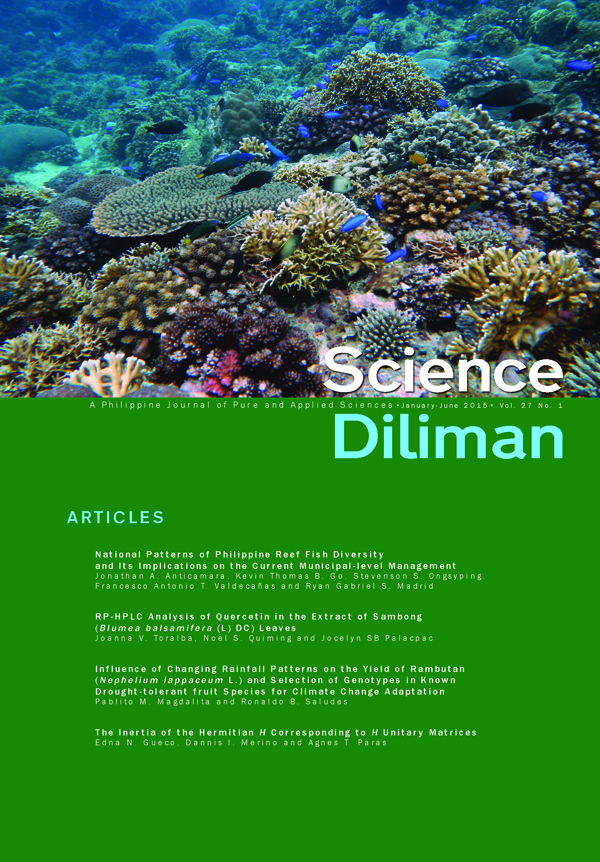National Patterns of Philippine Reef Fish Diversity and Its Implications on the Current Municipal-Level Management
Abstract
Recent national-level assessments of Philippine reef fish diversity have been mainly based on species richness surveys, but generally do not account for reef f ish abundance and biomass—metrics that better describe fish community assemblages. Given that the Philippines is considered a major biodiversity hotspot and is heavily reliant on coastal resources, there is a great need to quantify the current status of its reef fish diversity using standardized methods. Here, standardized Underwater Visual Census (UVC) belt transect sampling methods were used to quantify current levels of reef fish species richness, relative abundance, and relative biomass throughout the Philippines. Results showed that most surveyed municipalities were still species-rich (22.2 ± 0.8 reef fish species per 100 m2), but appeared depleted in terms of reef f ish abundance and biomass. Partitioning analysis revealed significant differences in reef fish species richness patterns across municipalities, suggesting the presence of a few restricted-range and rare species per site. However, partitioning analysis accounting for relative abundance showed that reef fish diversity was generally homogenous across study sites, suggesting the dominance of a few highly-abundant species. SIMPER analysis revealed that Philippine reefs were generally dominated by small and medium-bodied species, rather than large-bodied species—the latter of which are especially vulnerable to fishing due to certain life history traits (e.g. , late age at maturity and slow growth rate) and commercial exploitation. While current municipal-level management may be sufficient for restricted-range fish species, large-scale conservation efforts (i.e., in the form of collaborative marine reserve networks) are needed for wide-range and large-bodied species that are not confined to politically-defined municipal boundaries. In addition, long-term and nationwide efforts to systematically monitor Philippine reef diversity are needed to provide up-to-date knowledge of the status of Philippine reef diversity that will help support science-based reef management and recovery efforts throughout the country.
Keywords: Conservation, coastal management, marine reserves, Philippine reefs, reef fisheries



